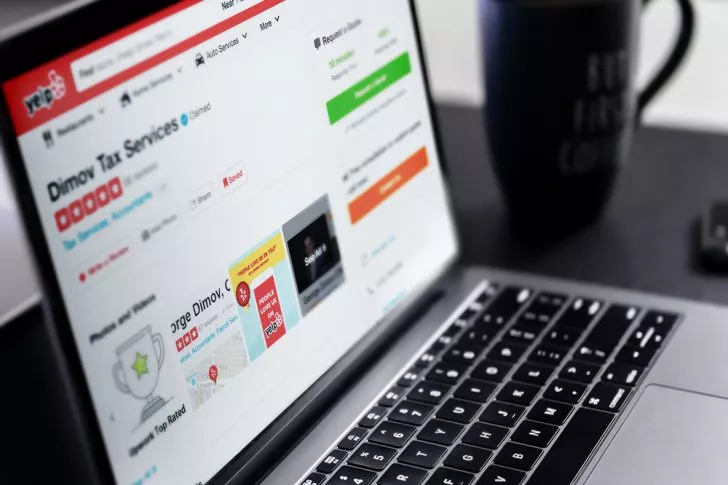Tax Deductions for G-Wagon Purchases
Introduction
Purchasing a high-end vehicle like the Mercedes-Benz G-Class (commonly known as the G-Wagon) for business use can provide substantial tax benefits under U.S. tax laws. Business owners often leverage these tax incentives to reduce their taxable income significantly. This article will explore the various aspects of claiming tax deductions for a G-Wagon, including Section 179, bonus depreciation, weight requirements and business use percentage requirements. By understanding these provisions, business owners can make informed decisions that align with their financial strategies.
Section 179 Deduction
The Section 179 deduction allows businesses to deduct the full purchase price of qualifying equipment and software purchased or financed during the tax year. This incentive is aimed at encouraging businesses to invest in themselves by purchasing new equipment.
Deduction Limits
For tax years beginning in 2024, the maximum Section 179 deduction is $1,220,000. However, this deduction limit is subject to a phase-out threshold. If the total cost of Section 179 property placed in service during the tax year exceeds $3,050,000, the deduction limit is reduced dollar for dollar above this threshold. This reduction ensures that only small to mid sized businesses primarily benefit from this deduction.
Qualifying Property
To be eligible for the Section 179 deduction, the property must be:
- Tangible personal property such as machinery, equipment and certain vehicles.
- Purchased (not leased) and used for business purposes more than 50% of the time.
- Placed in service during the tax year for which the deduction is being claimed.
Vehicles and Section 179
Certain vehicles including the G-Wagon qualify for the Section 179 deduction if they meet the following criteria:
- Weight Requirement: Gross Vehicle Weight Rating (GVWR): For a vehicle to qualify under Section 179, it must have a GVWR of more than 6,000 pounds but not exceeding 14,000 pounds. This classification includes many large SUVs, trucks and vans.
- Sport Utility Vehicles (SUVs): The maximum Section 179 deduction for most SUVs placed in service in tax years beginning in 2023 is limited to $28,900. This applies to four wheeled vehicles primarily designed or used to carry passengers over public streets and highways.
- Exceptions to the SUV Limitation:
- Vehicles designed to seat more than nine passengers behind the driver’s seat.
- Vehicles equipped with a cargo area of at least six feet in interior length that is an open area or designed for use as an open area but enclosed by a cap and not readily accessible from the passenger compartment.
- Vehicles with an integral enclosure that fully encloses the driver compartment and load carrying device, do not have seating behind the driver’s seat and is not easily accessible from the driver’s compartment.
- Business Use: For a vehicle to be eligible for the Section 179 deduction, it must be used more than 50% for business purposes. The deduction applies only to the portion of the vehicle’s cost that is used for business. For instance, iIf a vehicle costs $50,000 and is used 70% for business, the amount eligible for the Section 179 deduction is $35,000 ($50,000 * 70%).
Limitations and Phase-Out
- Dollar Limits: The total amount a business can deduct under Section 179 for all qualifying property, including vehicles, is $1,160,000 for tax years beginning in 2023. This limit is reduced dollar-for-dollar by the amount by which the total cost of Section 179 property placed in service during the tax year exceeds $2,890,000. For tax years beginning in 2024, the maximum section 179 expense deduction is $1,220,000. This limit is reduced by the amount by which the cost of section 179 property placed in service during the tax year exceeds $3,050,000.Also, the maximum section 179 expense deduction for sport utility vehicles placed in service in tax years beginning in 2024 is $30,500.
- Taxable Income Limitation: The Section 179 deduction cannot exceed the business’s taxable income for the year derived from the active conduct of any trade or business during the year. Any amount not deducted because of this limitation can be carried forward to subsequent years.
Depreciation Limits
Vehicles used for business purposes are also subject to annual depreciation limits under the Modified Accelerated Cost Recovery System (MACRS). These limits vary depending on whether the special depreciation allowance applies:
- With Special Depreciation Allowance: The total depreciation deduction, including Section 179, for a passenger automobile is limited to $20,200 in the first year.
- Without Special Depreciation Allowance: The total depreciation deduction for a passenger automobile is limited to $12,200 in the first year.
To qualify for the Section 179 deduction, vehicles must meet specific weight and usage requirements. They must be used more than 50% for business and deductions are subject to annual limits and phase out thresholds. For further details, it may be referred to IRS Publication 946: How to Depreciate Property and IRS Form 4562 Instructions.
Calculating the Deduction
The process for calculating the Section 179 deduction and bonus depreciation involves several steps:
- Determination of the Purchase Price: The total cost of the vehicle must be identified including taxes and other fees.
- Assess Business Use Percentage: The percentage of miles driven for business purposes relative to total miles driven should be calculated.
- Section 179 Deduction: Up to the maximum limit of $1 million must be deducted based on the business use percentage.
- Bonus Depreciation: The remaining cost (if any) under the 100% bonus depreciation rule should be deducted, again based on the business use percentage.
Process for Claiming the Deduction
To claim the Section 179 deduction:
- Completing IRS Form 4562: This form is used to report depreciation and amortization including the election to expense certain property under Section 179.
- Relevant Information: The total cost of Section 179 property placed in service and business use percentage must be included and the allowable deduction must be calculated.
- Tax Return: Form 4562 should be attached to the business tax return to officially claim the deduction.
Recapture Rule
If the Section 179 property is not used predominantly (more than 50%) in the trade or business at any time before the end of the property’s recovery period, the benefit of the Section 179 expense deduction must be reported as “other income” on the tax return. This ensures that businesses maintain the intended use of the deducted property for the duration of its useful life.
Understanding the intricacies of the Section 179 deduction can significantly impact a business’s financial health. For more information on Section 179 deduction, visit our relevant article here.
Bonus Depreciation
Bonus depreciation, officially known as the “additional first year depreciation deduction” allows businesses to deduct a significant portion of the cost of qualifying property including vehicles like the G-Wagons in the year it is placed in service.
Eligibility Requirements
To qualify for bonus depreciation, the property must meet the following criteria:
- Type of Property: The property must be tangible, depreciable and have a recovery period of 20 years or less. This includes machinery, equipment, certain vehicles and some improvements to nonresidential real property.
- Original Use: The original use of the property must commence with the taxpayer or the property must be acquired new to the taxpayer (used property can qualify if it meets specific criteria).
- Acquisition and Placement: The property must be acquired and placed in service. For certain properties including those with long production periods, the placed-in service date can extend to subsequent years.
Key Provisions
- 100% Bonus Depreciation: For qualified property placed in service between September 27, 2017, and December 31, 2022, businesses can deduct 100% of the cost. This rate begins phasing down to 80% for property placed in service in 2023, 60% in 2024, 40% in 2025, and 20% in 2026.
- Applicable Property: Both new and used property qualify, provided the used property is new to the taxpayer and meets all other criteria.
Electing Out
Businesses might elect out of bonus depreciation for any class of property for a given tax year. This election must be made by attaching a statement to the taxpayer’s return, specifying the class of property for which the election is being made.
Calculation Example
Consider a business that purchases a G-Wagon for $130,000 in 2023:
- Determination of Bonus Depreciation: If the G-Wagon qualifies, the business can deduct 80% of its cost, equating to $104,000 in the year of purchase.
- Applying Remaining Depreciation: The remaining 20% ($26,000) would be depreciated over the asset’s normal recovery period using the Modified Accelerated Cost Recovery System (MACRS).
Process for Claiming Bonus Depreciation
- Completing IRS Form 4562: This form is used to claim depreciation and amortization including bonus depreciation.
- Tax Return: Form 4562 should be attached to the business’s tax return, detailing the cost, date placed in service and the amount of bonus depreciation claimed.
Conclusion
Utilizing the tax incentives available for purchasing a business vehicle like the G-Wagon can provide significant financial benefits. By understanding and applying the rules of Section 179, bonus depreciation, and other requirements, businesses can substantially reduce their taxable income. Dimov Tax & CPA Services is dedicated to helping clients navigate these complexities to achieve optimal tax outcomes. For personalized assistance and strategic tax planning, contact us today.
Services Provided by Dimov Tax & CPA Services
Dimov Tax & CPA Services offers comprehensive support for businesses looking to maximize their tax benefits through vehicle purchases. Our services include:
- Tax Consultation: Evaluating the eligibility of vehicles for Section 179 and bonus depreciation deductions.
- Record Keeping Assistance: Ensuring accurate tracking of business versus personal use to comply with IRS requirements.
- Tax Filing Support: Preparing and filing tax returns to ensure all eligible deductions are claimed correctly.
Strategic Planning: Advising on the optimal timing of vehicle purchases to align with fiscal goals and maximize tax savings.


